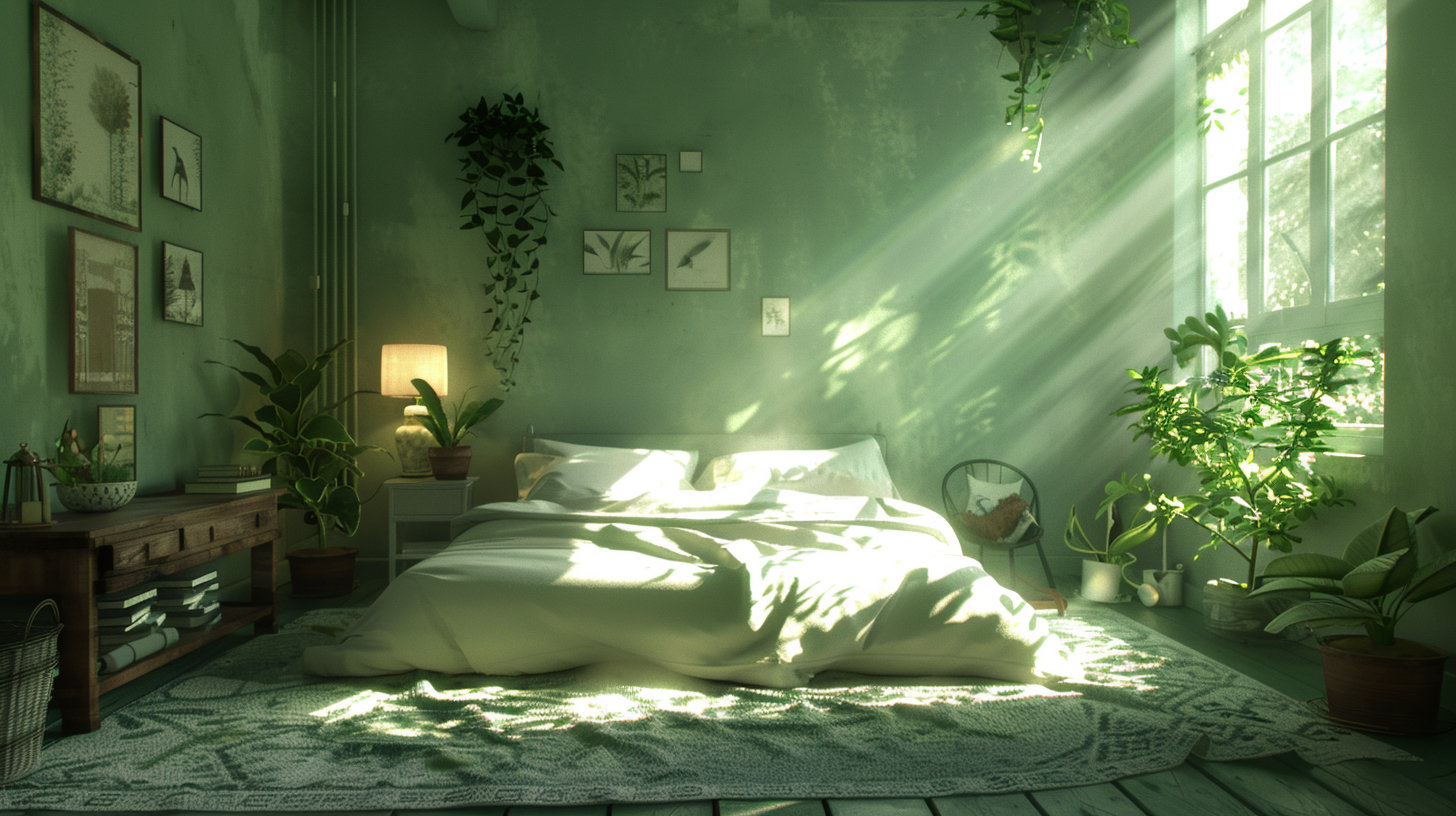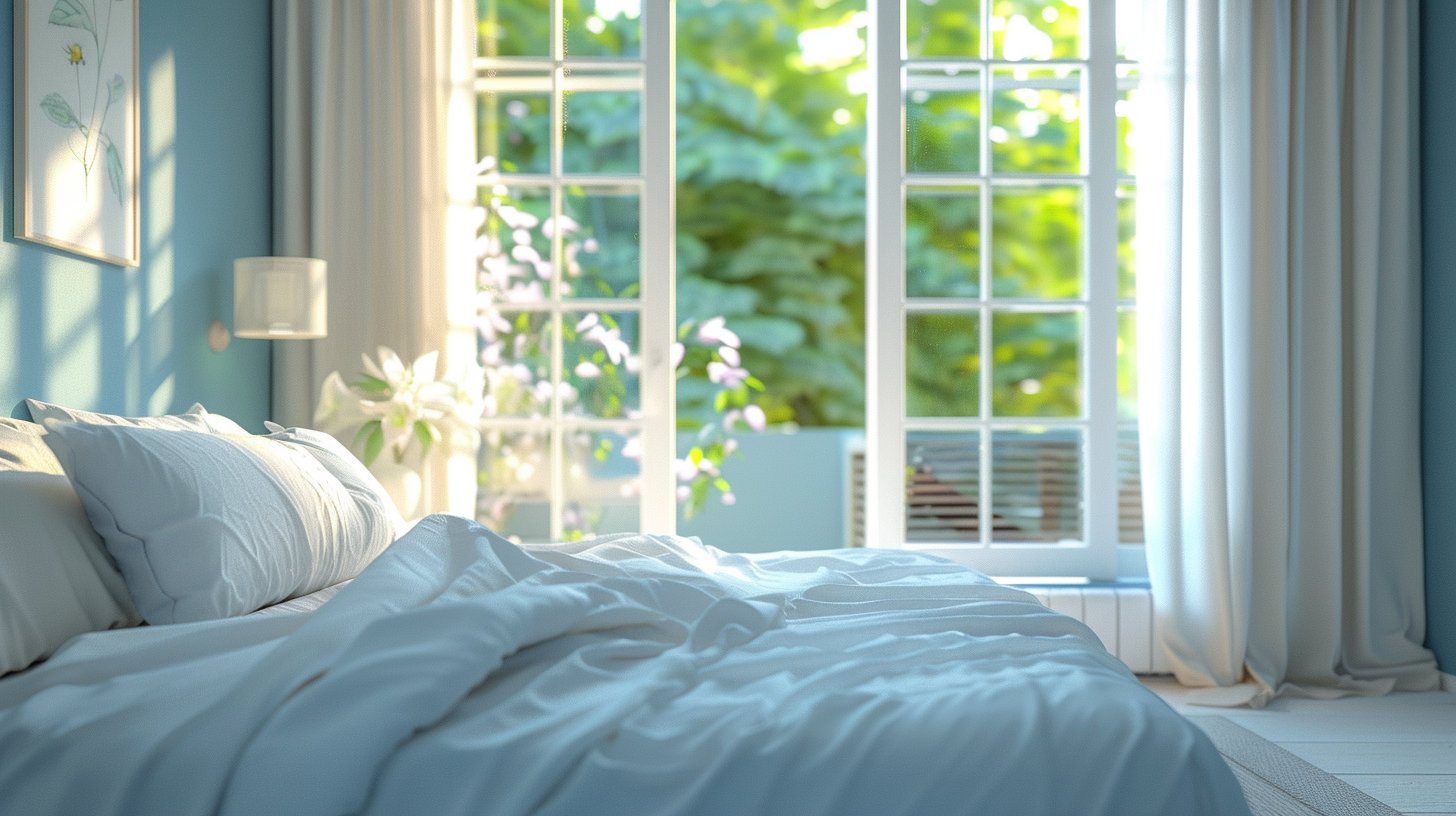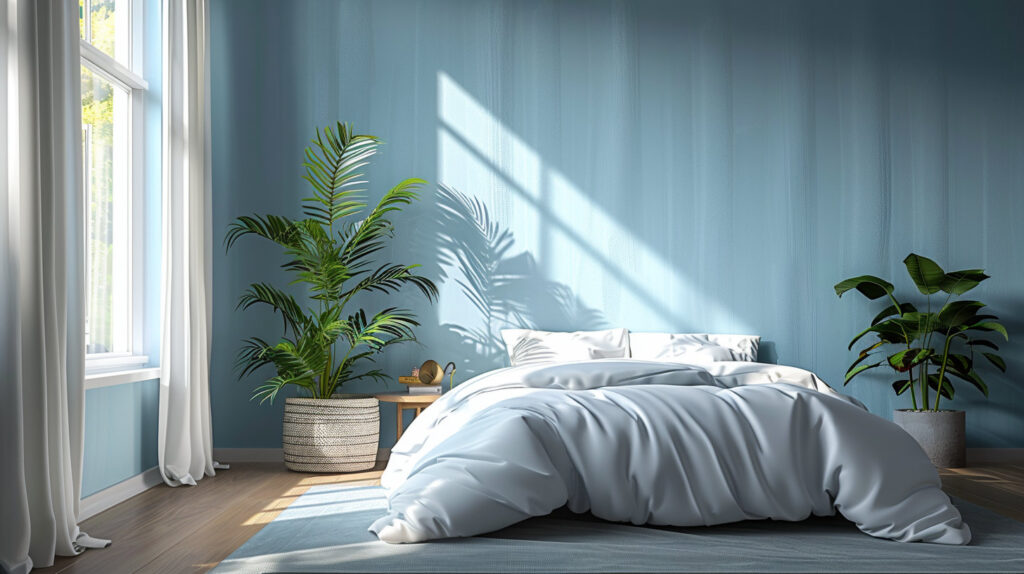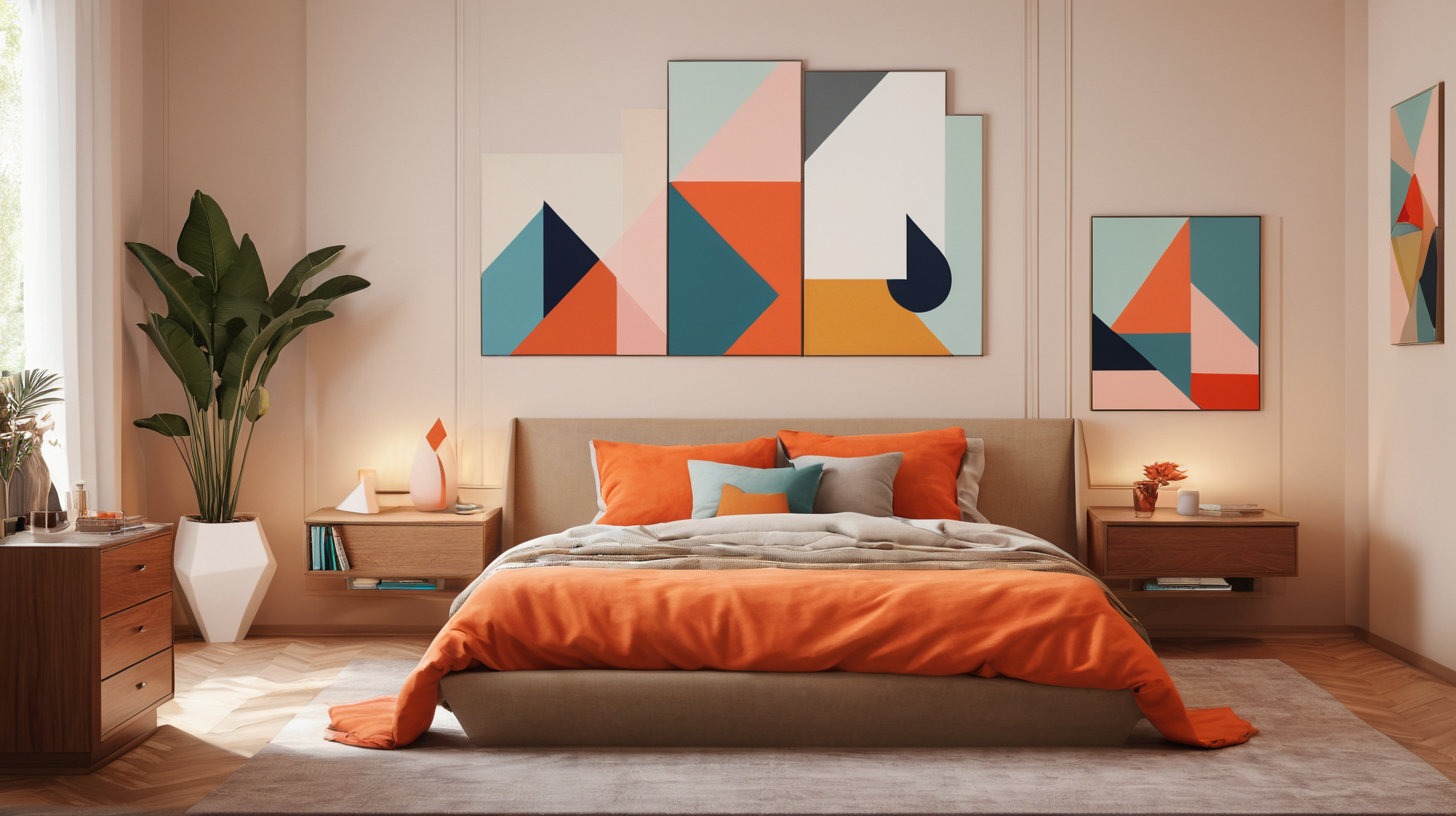Ever walked into a room and instantly felt your shoulders drop, your breath deepen, and your worries melt away? That’s the power of color at work, and when it comes to bedrooms, green paint might just be your ticket to tranquility. Let’s dive into the world of green paint for bedrooms and discover how this versatile hue can transform your sleeping space into a serene sanctuary.
The Psychology of Green in Bedrooms
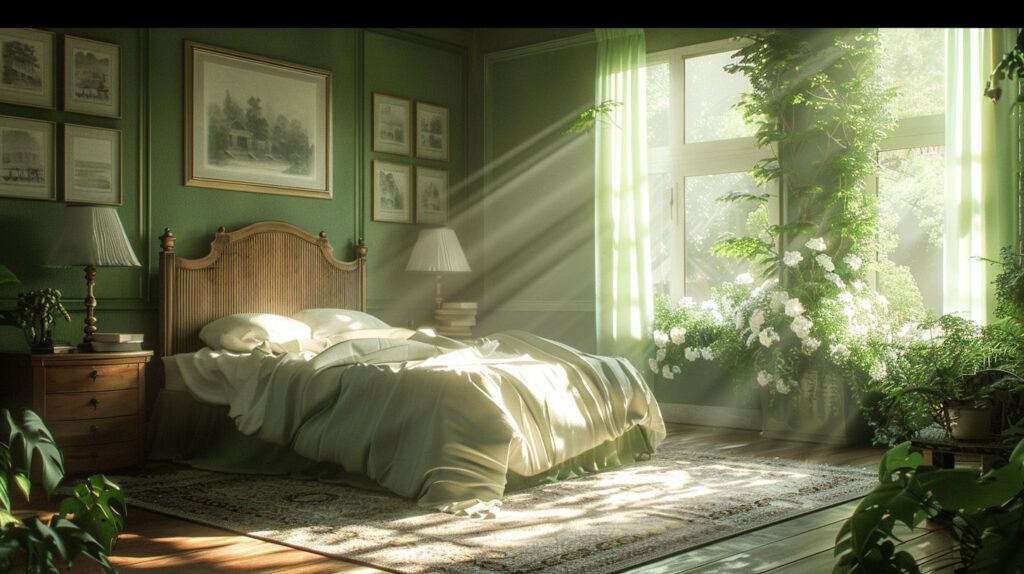
Picture this: you’re standing in a lush forest, surrounded by towering trees and dappled sunlight. Feel that sense of calm washing over you? That’s no coincidence. Green, the color of nature, has a profound effect on our psyche.
Color psychology tells us that green is associated with growth, harmony, and balance. It’s like a visual deep breath, signaling to our brains that it’s time to relax. But don’t just take my word for it – science backs this up. A study published in the Journal of Environmental Psychology found that exposure to green environments can reduce stress and increase well-being.
When it comes to bedrooms, this calming effect is a game-changer. Imagine drifting off to sleep surrounded by soothing sage walls or waking up to the gentle embrace of a mint-green ceiling. It’s like having a piece of nature’s serenity right in your own home.
Benefits of Green Paint for Bedrooms
Now, you might be wondering, “Why should I choose green over other colors?” Well, buckle up, because the benefits are as plentiful as shades of green in a paint swatch book.
- Creates a restful environment: Green paint can turn your bedroom into a peaceful retreat, perfect for unwinding after a long day.
- Reduces stress: The calming properties of green can help lower cortisol levels, making it easier to shake off daily stressors.
- Enhances sleep quality: A soothing green environment can promote better sleep, helping you wake up refreshed and ready to tackle the day.
- Versatile aesthetic: From modern minimalism to cozy cottagecore, green paint plays well with various decor styles.
But here’s the kicker – green paint isn’t just a passing trend. It’s a timeless choice that can grow and evolve with your style. As interior designer Sarah Johnson puts it, “Green is like the little black dress of the paint world – it never goes out of style.”
Choosing the Right Shade of Green
Alright, you’re sold on the idea of green paint for bedrooms. But with more shades than leaves on a tree, how do you pick the perfect one? Don’t worry, I’ve got you covered.
Light vs. Dark Green: Impact on Mood and Room Size
Light greens, like mint or sage, can make a room feel more spacious and airy. They’re perfect for smaller bedrooms or spaces with limited natural light. On the flip side, darker greens like emerald or forest green create a cozy, intimate atmosphere – ideal for larger rooms or if you’re going for a dramatic look.
Popular Green Shades for Bedrooms
- Mint: Fresh and invigorating, perfect for a youthful vibe
- Sage: Earthy and calming, great for creating a natural ambiance
- Emerald: Rich and luxurious, ideal for a bold statement
- Olive: Warm and sophisticated, pairs well with wood tones
Pro tip: Don’t just rely on tiny paint chips. Get sample pots and paint large swatches on your walls. Live with them for a few days, observing how they look in different lighting conditions. You might be surprised at how a color transforms from morning to night!
Best Green Paint Brands and Products
Now that you’re armed with knowledge about green shades, let’s talk brands. Not all paints are created equal, especially when it comes to bedrooms where air quality is crucial.
Top Green Paint Brands
- Benjamin Moore: Known for their high-quality, long-lasting finishes
- Sherwin-Williams: Offers a wide range of green shades and finishes
- Behr: Budget-friendly option with good coverage
But here’s a nugget of wisdom – don’t just focus on color. Consider the finish too. A matte finish can hide imperfections and create a soft, velvety look, while eggshell offers a subtle sheen that’s easy to clean.
For the eco-conscious among us (and shouldn’t we all be?), there are fantastic non-toxic, low-VOC options available. Brands like Farrow & Ball and Clare offer beautiful green paints that are kinder to both you and the planet.
How to Pair Green Paint with Bedroom Decor
So, you’ve picked your perfect shade of green. Now what? It’s time to think about how to make it sing in harmony with your bedroom decor.
Green is incredibly versatile, but it really shines when paired thoughtfully. Here are some ideas to get your creative juices flowing:
- Complementary colors: Try accents in soft pinks or deep purples for a striking contrast
- Natural elements: Bring in wooden furniture or woven textures to enhance the earthy vibe
- Metallics: Gold or brass accents can add a touch of glamour to green walls
Remember, it’s all about balance. If you’ve gone for a bold green, consider neutral bedding to avoid overwhelming the space. Conversely, a light green backdrop is the perfect canvas for vibrant accessories.
Green Paint Trends in Bedroom Design
Green might be timeless, but that doesn’t mean it can’t be trendy too. Current design trends are all about bringing the outdoors in, and green paint is at the forefront of this movement.
One popular approach is the “feature wall” – painting one wall in a deep, rich green while keeping the others neutral. It’s a great way to dip your toe into the green paint trend without committing to a full room makeover.
Another trend gaining traction is the “tonal look” – using varying shades of green throughout the room for a cohesive, layered effect. Imagine light sage walls with emerald green curtains and olive green throw pillows. It’s like creating your own personal forest retreat!
DIY Tips for Painting Your Bedroom Green
Ready to roll up your sleeves and get painting? Here’s a quick guide to help you achieve a professional-looking finish:
- Prep is key: Clean walls, fill holes, and sand rough spots before you start
- Invest in quality tools: Good brushes and rollers make a world of difference
- Use painter’s tape: For clean edges around trim and ceilings
- Apply multiple thin coats: This gives a more even finish than one thick coat
- Be patient: Allow each coat to dry fully before applying the next
And here’s a little secret from a recovering impatient painter – resist the urge to remove the painter’s tape immediately. Let the paint dry completely, then use a sharp utility knife to score along the edge of the tape before peeling it off. This prevents you from accidentally peeling off your beautiful new paint job along with the tape. Trust me, I learned this the hard way!
FAQs
Q: What is the most relaxing shade of green for a bedroom? A: While personal preference plays a role, many find soft, muted greens like sage or celadon to be particularly relaxing. These shades mimic the calming effects of nature without being overstimulating.
Q: Can green paint make a small bedroom look larger? A: Absolutely! Light, cool-toned greens can create the illusion of more space. Pair them with plenty of natural light and strategically placed mirrors to maximize the effect.
Q: Is green paint suitable for all bedroom styles? A: Green is incredibly versatile and can work with various decor styles. From bohemian to minimalist, there’s a shade of green that can complement your aesthetic. The key is choosing the right tone and pairing it thoughtfully with your existing decor.
Summary
There you have it – the lowdown on green paint for bedrooms. From its stress-busting properties to its design versatility, green paint offers a world of possibilities for creating your perfect sleep sanctuary.
Remember, choosing a paint color is a personal journey. What works for one person might not work for another. So take your time, experiment with samples, and most importantly, have fun with it! After all, your bedroom should be a reflection of you – a place where you can truly relax and be yourself.
So, are you ready to go green? Grab those paint swatches, unleash your inner interior designer, and get ready to transform your bedroom into the calming oasis you deserve. Sweet dreams await in your newly painted green haven!
